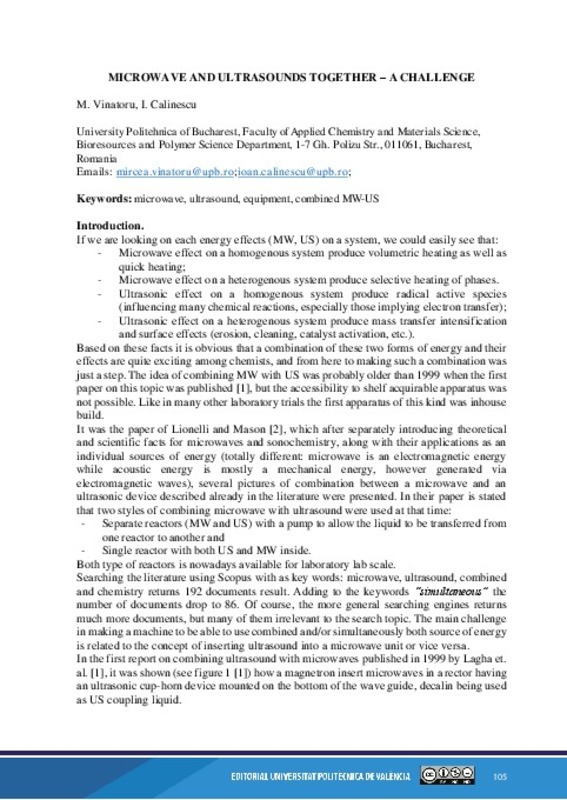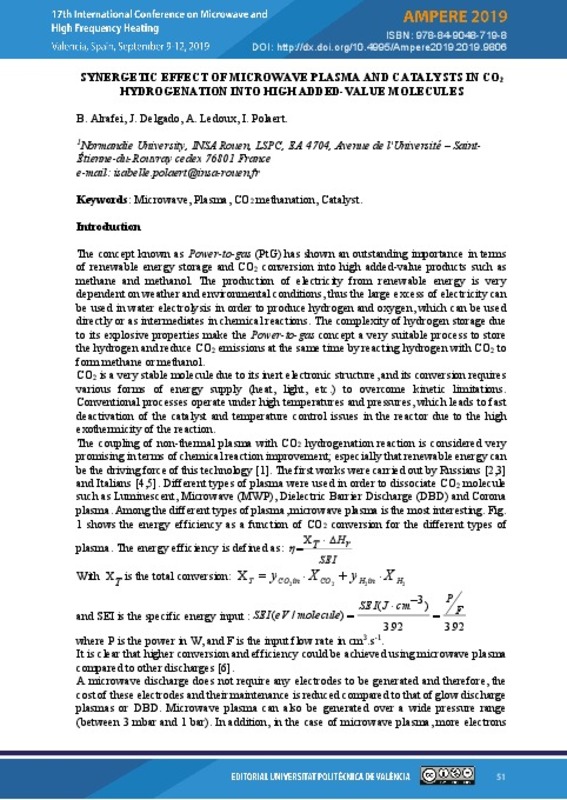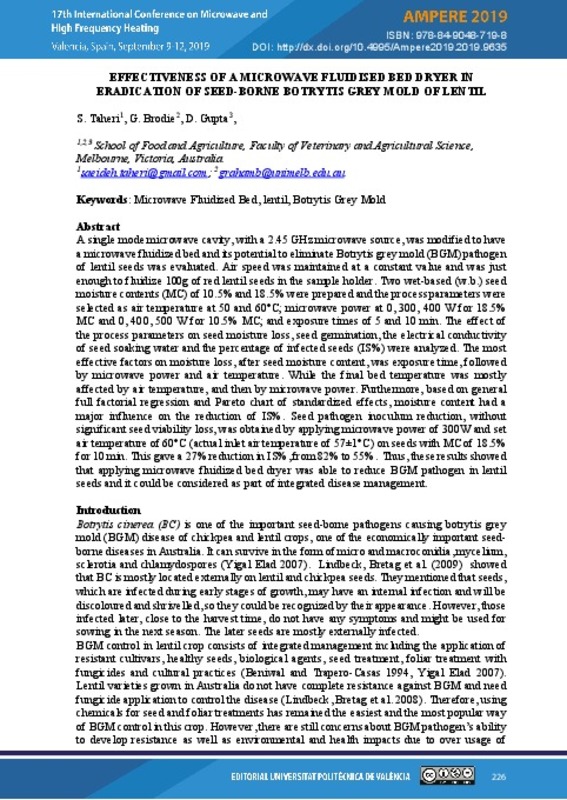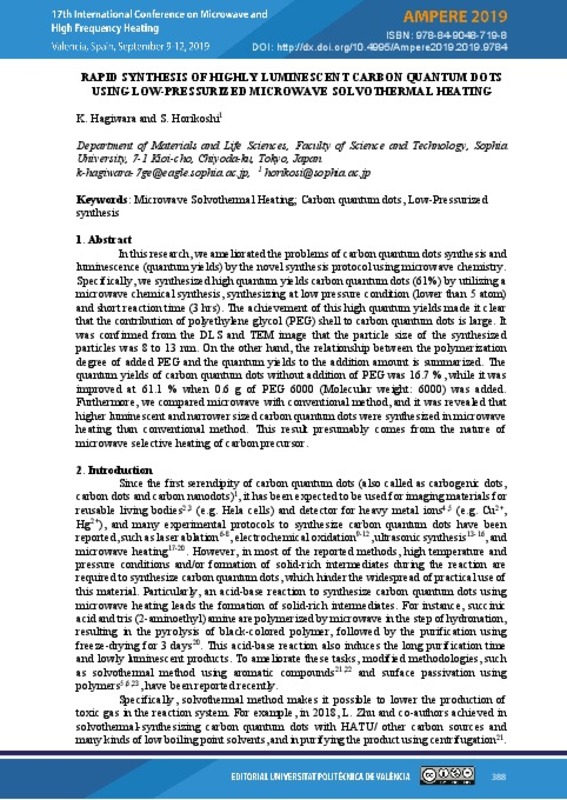JavaScript is disabled for your browser. Some features of this site may not work without it.
Buscar en RiuNet
Listar
Mi cuenta
Estadísticas
Ayuda RiuNet
Admin. UPV
Microwave and ultrasounds together – a challenge
Mostrar el registro sencillo del ítem
Ficheros en el ítem
| dc.contributor.author | Vinatoru, Mircea
|
es_ES |
| dc.date.accessioned | 2019-11-11T11:47:20Z | |
| dc.date.available | 2019-11-11T11:47:20Z | |
| dc.date.issued | 2019-10-15 | |
| dc.identifier.isbn | 9788490487198 | |
| dc.identifier.uri | http://hdl.handle.net/10251/130603 | |
| dc.description.abstract | [EN] The literature related to microwave and ultrasound working simultaneously is rather infrequent. The reason is obvious: microwave irradiation is of electromagnetic origin while ultrasound is a mechanical vibration energy. Moreover, the optimal settings for ultrasound propagation throughout a reaction media do not coincide with the conditions required for application of microwaves. Therefore, the challenge is to find a way to best combination of these sources of energy into one apparatus to allow researchers to take advantage of the features of each technology. The oldest paper describing such a combination – microwave and ultrasound is having just 20 years [1] and describe an apparatus which uses a probe system delivering ultrasound through decalin to a vessel holding the reagents dipped in the MW cavity (fig. 1a). Another possibility using a normal MW oven is described by Peng [2] (fig.1b), but this setup is having radiation leakage problems and needs a proper protection. Ragaini et all proposed another type of setup [3] (fig. 1c), not easy to reproduce, but describing calibration and parameters which show an additive increase of thermal energy delivered when MW and US works simultaneous. Insert here uploaded pictures Figure 1. Some MW-US simultaneous setups Few years ago, Cravotto and Cintas [4], disccussed for the first time the potential of using MW and US in sequential or tandem setups. Their paper discuss all possible setups for using mostly glass probe for devlivery of ultrasonic energy or classical setup (fig. 1a). Slowly the concept gain popularity and the paper of Lionelly and Mason [5] prompts to the potential industrial applications, naming the combination of microwave with ultrasound a hybrid technology. The challenge in using this “hybrid technology” is to find a vesatile and reproducible apparatus able to deliver both microwave and ultrasound at a full controlable parameters. In our laboratory we have and use the setup like in the fig. 1a, but the ultrasonic energy is delivered by an ultrasonic cleaning device attached to microwave device (SAIREM Miniflow 200SS). To achieve the above mentioned outcome launched a project to build a device which could work with MW and US in tandem (as Cravotto mentioned [4]) using an US device able to deliver more than a single ultrasonic frequency at a full controlled power. It is our believe that such a device could significantly contribute to MW-US tandem equipment development. Based on our expertise and potential proposed interaction of US with reagents [6] we will investigate the influence (if any) of ultrasound upon MW field. In this paper we will present the earlier results of “Tandem Microwave Ultrasound” energy influence on chemical reagents. References 1. Lagha, A., et al., Analusis, 1999. 27(5): p. 452-457. 2. Peng, Y. and G. Song, Green Chemistry, 2001. 3(6): p. 302-304. 3. Ragaini, V., et al., Ultrasonics Sonochemistry, 2012. 19(4): p. 872-876. 4. Cravotto, G. and P. Cintas, Chemistry - A European Journal, 2007. 13(7): p. 1902-1909. 5. Leonelli, C. and T.J. Mason, Chemical Engineering and Processing: Process Intensification, 2010. 49(9): p. 885-900. 6. Vinatoru, M. and T.J. Mason, Ultrasonics Sonochemistry, 2018. | es_ES |
| dc.description.sponsorship | The authors acknowledge the financial support received from the Competitiveness Operational Programme 2014-2020, Action 1.1.4: Attracting high-level personnel from abroad in order to enhance the RD capacity, project: P_37_471, „Ultrasonic/Microwave Nonconventional Techniques as new tools for nonchemical and chemical processes”, financed by contract: 47/05.09.2016 | es_ES |
| dc.format.extent | 8 | es_ES |
| dc.language | Inglés | es_ES |
| dc.publisher | Editorial Universitat Politècnica de València | es_ES |
| dc.relation.ispartof | AMPERE 2019. 17th International Conference on Microwave and High Frequency Heating | es_ES |
| dc.rights | Reconocimiento - No comercial - Sin obra derivada (by-nc-nd) | es_ES |
| dc.subject | Energy Production by Microwaves | es_ES |
| dc.subject | Microwave CVD | es_ES |
| dc.subject | EM Modelling | es_ES |
| dc.subject | Microwave Material interaction | es_ES |
| dc.subject | Dielectric Properties | es_ES |
| dc.subject | Dielectric Properties Measurement | es_ES |
| dc.subject | Solid State Microwave | es_ES |
| dc.subject | Microwave Processing | es_ES |
| dc.subject | Microwave Chemistry | es_ES |
| dc.subject | Microwave applicators design | es_ES |
| dc.title | Microwave and ultrasounds together – a challenge | es_ES |
| dc.type | Capítulo de libro | es_ES |
| dc.type | Comunicación en congreso | es_ES |
| dc.identifier.doi | 10.4995/AMPERE2019.2019.9822 | |
| dc.relation.projectID | info:eu-repo/grantAgreement/Government of Romania//47%2F05.09.2016/ | es_ES |
| dc.rights.accessRights | Abierto | es_ES |
| dc.description.bibliographicCitation | Vinatoru, M. (2019). Microwave and ultrasounds together – a challenge. En AMPERE 2019. 17th International Conference on Microwave and High Frequency Heating. Editorial Universitat Politècnica de València. 105-112. https://doi.org/10.4995/AMPERE2019.2019.9822 | es_ES |
| dc.description.accrualMethod | OCS | es_ES |
| dc.relation.conferencename | Ampere 2019 | es_ES |
| dc.relation.conferencedate | Septiembre 09-12,2019 | es_ES |
| dc.relation.conferenceplace | Valencia, Spain | es_ES |
| dc.relation.publisherversion | http://ocs.editorial.upv.es/index.php/AMPERE2019/AMPERE2019/paper/view/9822 | es_ES |
| dc.description.upvformatpinicio | 105 | es_ES |
| dc.description.upvformatpfin | 112 | es_ES |
| dc.type.version | info:eu-repo/semantics/publishedVersion | es_ES |
| dc.relation.pasarela | OCS\9822 | es_ES |
| dc.contributor.funder | European Regional Development Fund | |
| dc.contributor.funder | Government of Romania |
Este ítem aparece en la(s) siguiente(s) colección(ones)
-
Ampere 2019 [66]











